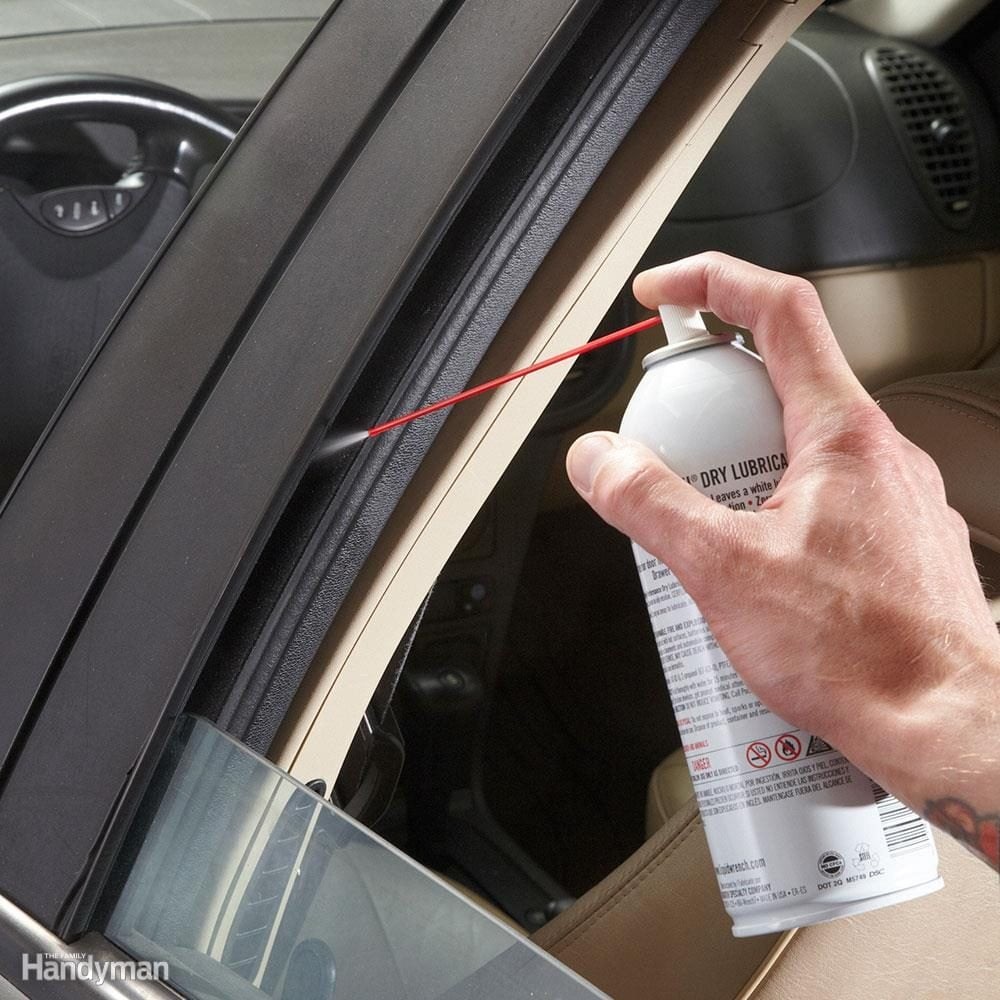Maintaining your car can seem daunting, but there are several straightforward repairs you can tackle at home, saving you time and money. Many car owners are surprised to learn just how much they can do themselves with a few simple tools and a bit of know-how. Let’s explore some easy car maintenance tasks that you can confidently undertake.
Simple Maintenance: Lubricating Window Tracks
Window operation getting sluggish? Especially in colder climates, freezing water can infiltrate your window tracks, leading to resistance when you try to open or close your windows. This drag isn’t just annoying; it can actually damage the window regulator cables, potentially leading to expensive repairs costing around $300. Fortunately, this is a very easy problem to prevent and fix yourself.
The solution is simple lubrication. Using a spray silicone or dry Teflon spray lubricant, you can quickly restore smooth window operation. Simply lower your car window and spray the lubricant directly into both the front and back window tracks. Apply enough lubricant so that it visibly drips down the track. After applying the lubricant, operate the window several times, opening and closing it fully to distribute the lubricant throughout the entire track mechanism. If any spray gets onto the glass, just use a standard glass cleaner and a paper towel to wipe it clean. This simple step can save you from potential headaches and costly repairs down the line.
Easy Fluid Swap: Brake Fluid Refresh
Maintaining your brake fluid is crucial for safety. While some car manufacturers recommend replacing brake fluid every two years or every 24,000 miles, others have no specific recommendations. However, brake fluid can absorb moisture over time, which can reduce its effectiveness and potentially damage your braking system. Luckily, testing your brake fluid is easy with readily available test strips. By simply dipping a test strip into your brake fluid reservoir and comparing the color to the chart on the packaging, you can quickly assess its condition.
While a complete brake fluid flush requires specialized equipment, you can easily perform a brake fluid swap at home. This involves removing some of the old fluid and replacing it with fresh fluid. Using a turkey baster, carefully extract the dark brown brake fluid from the reservoir. Remember that brake fluid and power steering fluid are incompatible, so ensure you use separate basters if you are working with both. Squirt the old brake fluid into a designated recycling container. Then, refill the reservoir with fresh, new brake fluid to the recommended level. After refilling, drive your car for about a week. This allows the new fluid to mix with the remaining older fluid in the system. Repeat this fluid swap procedure several times over the next few weeks until the fluid in your brake fluid reservoir maintains a light honey color, indicating a significant refresh of your brake fluid.
Important Note: Brake fluid can be corrosive and may damage the rubber bulb of the baster. Avoid drawing fluid all the way into the bulb to prolong its life.
DIY Fluid Change: Power Steering Fluid
Similar to brake fluid, power steering fluid also degrades over time and usage. Unfortunately, there are no easy test strips for power steering fluid. Therefore, it’s best to adhere to your car manufacturer’s service recommendations or follow the general guideline of changing it every two years or 24,000 miles. Changing your power steering fluid is another simple task you can do at home using the turkey baster method.
With the engine turned off, use a turkey baster to extract as much of the old power steering fluid as possible from the reservoir. Once the reservoir is mostly empty, refill it with fresh power steering fluid to the correct fill line. Start your engine and let it run for about 15 seconds to circulate the new fluid through the system. Then, repeat the fluid swap procedure, removing and replacing fluid, until you have used almost the entire quart of new power steering fluid. This ensures you’ve replaced a significant portion of the old fluid with new, clean fluid.
Important Note: Always use the power steering fluid type specifically recommended for your vehicle. Never substitute with “universal” power steering fluids and avoid using any “miracle” additives or stop-leak products. These can cause serious problems by clogging the fine filters within your steering system, leading to expensive failures.
By performing these simple maintenance tasks – lubricating window tracks, swapping brake fluid, and changing power steering fluid – you can proactively care for your car, prevent potential problems, and save money on auto repair shop visits. These are just a few examples of what car repairs you can confidently handle yourself, empowering you to become more self-sufficient in car ownership.


